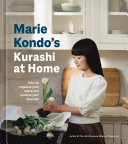

Kurashi is a Japanese term that encompasses the idea of a lifestyle that is both intentional and harmonious. In 'Kurashi at Home', Marie Kondo emphasizes the importance of creating a living space that reflects your values and brings joy. This concept goes beyond mere organization and decluttering; it involves a holistic approach to how you live your life within your home. Kondo suggests that by understanding what truly matters to us, we can curate our spaces to support our well-being and happiness. This intentionality in our living environment can lead to a more fulfilling life, as it encourages mindfulness and a deeper connection to our surroundings.
Continue readingKondo's method of decluttering is not just about getting rid of things; it's about making room for what truly matters. In 'Kurashi at Home', she elaborates on her well-known KonMari method, which encourages individuals to evaluate their belongings based on whether they spark joy. This process is deeply personal and requires introspection. Kondo emphasizes that decluttering should be approached with a sense of gratitude for the items we choose to let go of, which can transform the experience into a positive one. This purposeful decluttering allows individuals to create a home that aligns with their values and supports their desired lifestyle.
Continue readingKondo discusses how our physical environment significantly impacts our mental and emotional well-being. The book illustrates how cluttered spaces can lead to feelings of stress and overwhelm, while organized and thoughtfully arranged spaces can promote calmness and clarity. Kondo encourages readers to consider their homes as sanctuaries that should nurture their well-being. This idea extends to the arrangement of furniture, the choice of colors, and the overall atmosphere of the home. By creating a space that reflects peace and joy, individuals can enhance their daily lives and cultivate a more harmonious existence.
Continue readingA significant theme in 'Kurashi at Home' is the practice of mindfulness. Kondo encourages readers to engage in daily rituals that foster a sense of presence and appreciation for the moment. This can include simple actions like making your bed, preparing meals, or enjoying a cup of tea. By infusing these everyday activities with mindfulness, individuals can create a deeper connection to their environment and experiences. Kondo illustrates how these small acts can transform mundane tasks into meaningful rituals that contribute to a more joyful and fulfilling life.
Continue readingKondo emphasizes the importance of having a personal sanctuary within the home— a space that serves as a retreat from the chaos of daily life. This could be a cozy reading nook, a meditation corner, or any area that brings peace and joy. The book guides readers in designing these sanctuaries by curating items that inspire tranquility and happiness. Kondo believes that having a dedicated space for relaxation and reflection can significantly enhance one's quality of life, providing a necessary balance amidst the busyness of modern living.
Continue readingIn 'Kurashi at Home', Kondo touches on the importance of sustainability and conscious living. She advocates for mindful consumption, encouraging readers to consider the impact of their choices on the environment. This idea aligns with the broader movement towards sustainability, where individuals are urged to be more aware of the products they bring into their homes. Kondo suggests that by choosing quality over quantity and valuing what we own, we can contribute to a more sustainable lifestyle. This approach not only benefits the planet but also enhances personal satisfaction and joy.
Continue readingFinally, Kondo emphasizes the significance of joy and gratitude in our lives. Throughout 'Kurashi at Home', she encourages readers to cultivate an attitude of appreciation for both their belongings and their experiences. This practice of gratitude can lead to increased happiness and fulfillment. Kondo suggests incorporating gratitude into daily routines, whether through journaling, meditation, or simply reflecting on the positive aspects of life. By fostering a mindset of joy and gratitude, individuals can create a more enriching and satisfying life experience.
Continue reading